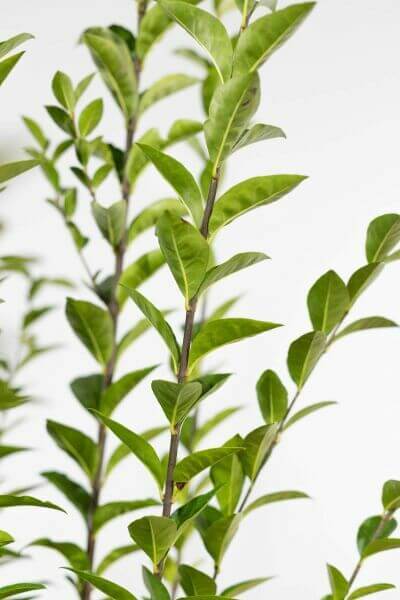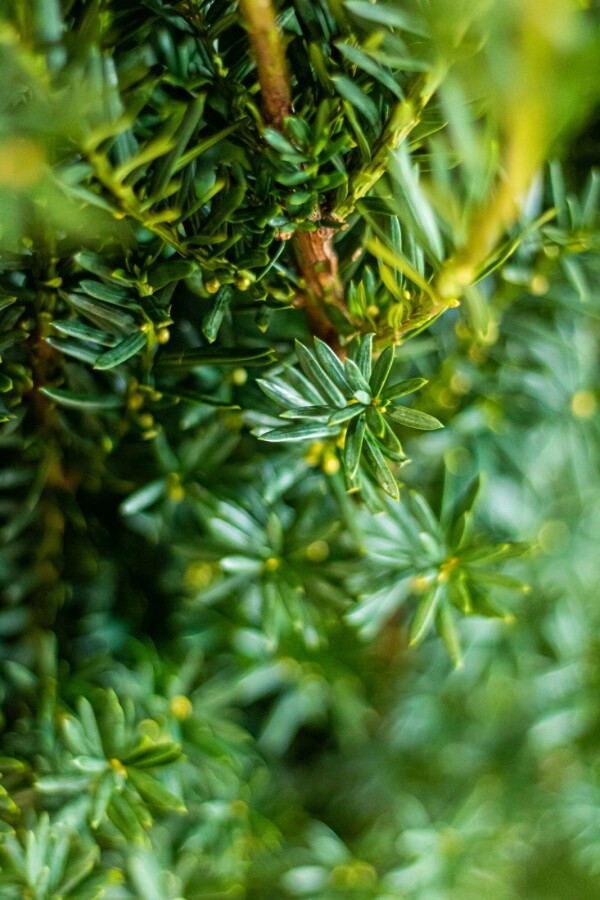Hedge Plants For Foliage Interest
Hedge Plants For Foliage Interest
Blog Article
Hedge Plants For Year-round Privacy
Improve your garden's allure with lush hedge varieties such as Yew (Taxus), Thuja, Laurel, Photinia, and Bamboo, celebrated for their structural stability and ecological benefits.
Yew and Thuja provide evergreen protection and winter strength, while Laurel provides rapid development and broad, aromatic leaves.
Photinia adds seasonal beauty with its vibrant red foliage, and Bamboo provides a low-maintenance, peaceful atmosphere.
These hedges improve air quality, lower noise, and produce tranquil, personal spaces.
Appropriate planting, spacing, and upkeep make sure vigorous growth and eco-friendly harmony.
Check out how these lavish varieties can elevate your garden's charm and well-being.
Secret Takeaways
Change Your Garden With Lush Hedge Ranges
- Select Yew for its dense, evergreen growth and unequaled durability.
- Go with Laurel for its quick growth and broad leaves, guaranteeing quick personal privacy.
- Pick Photinia for its lively seasonal foliage, which turns a striking dark red.
- Make use of Bamboo for a low-maintenance, winter-hardy hedge with aesthetic appeal.
- Space plants 2-3 per meter and prune regularly for ideal development and health.
Popular Hedge Plants
When changing a garden with lavish hedge ranges, it's necessary to think about popular hedge plants such as Yew, Thuja, Laurel, and Photinia due to their special characteristics and benefits.
Yew (Taxus) is extremely respected for its durability and thick, green development, making it a prime option for sustaining landscapes.
Thuja is kept in mind for its evergreen foliage and robust winter durability.
Photinia adds seasonal vibrancy with red leaves that darken in time, producing dynamic visual appeal.
Laurel provides fast growth and fragrant, broad leaves, ideal for quick privacy.
Additionally, Bamboo is an excellent option for atmosphere, providing a low-maintenance, winter-hardy alternative that boosts the garden's aesthetic with its classy, swaying walking canes.
These choices accommodate a range of horticultural requirements and choices.
Advantages of Garden Hedges
Garden hedges use a plethora of advantages, making them a valuable addition to any landscape. These natural barriers are affordable to implement and supply considerable wind protection, boosting air flow and contributing to noise decrease. The dense foliage of hedges like Thuja and Beech ensures personal privacy by obstructing presence, producing a secluded and tranquil environment.
Hedges likewise play a vital role in microclimate guideline, offering a stable environment that promotes plant growth and lessens temperature variations. Their elaborate leaf structures filter toxins, enhancing air quality and contributing to a much healthier garden ecosystem.
Furthermore, hedges excel in noise decrease, absorbing and deflecting acoustic waves to lower ambient noise levels. This dual performance of providing both acoustic and visual privacy boosts the overall serenity and visual appeal of any garden.
Planting and Maintenance Tips
For a successful hedge, careful preparation of the planting area is important. Make sure the soil has proper pH and drain to support strong root advancement.
Space the plants appropriately for the picked species. Water the hedge frequently during its preliminary development phase, adjusting as needed with seasonal modifications.
Carry out a systematic pest control and disease avoidance method, utilizing chemical or organic treatments when required. Regularly examine for aphids, termites, and fungal infections.
Apply mulch to keep moisture and suppress weeds. Seasonal pruning promotes thick growth and air circulation, necessary for plant health.
Following these guidelines will help you cultivate a lively, well-kept hedge that boosts the beauty of your garden.
Spacing and Cutting Standards
Spacing and Cutting Standards
Proper spacing and trimming are essential for cultivating healthy, visually appealing hedges. Sufficient spacing guarantees each plant receives adequate nutrients, light, and airflow.
Follow these guidelines for ideal hedge maintenance:
- Spacing: Position hedge plants 2-3 plants per meter to encourage robust growth.
- Pruning Strategies: Routine pruning is necessary for keeping wanted hedge height and shape. Trim new development in summer season and cut down older wood throughout winter season.
- Seasonal Care: Adjust trimming schedules and techniques according to seasonal requirements to ensure plant health.
- Hedge Height: Frequently display and cut to preserve the desired hedge height and achieve consistent looks.
Adhering to these steps will ensure your hedge grows, enhancing both the appeal and functionality of your garden.
Picking the Right Hedge
Picking the Right Hedge
Picking the proper hedge involves evaluating factors such as mature height, foliage density, and environmental resilience. Effective hedge plant choice requires understanding each species' growth characteristics and site-specific adaptability.
For instance, Yew (Taxus) offers exceptional longevity and thick growth, while Thuja is notable for its winter season resilience. In addition, considering upkeep requirements is important; fast-growing species like Laurel or Privet need regular cutting, whereas low-maintenance alternatives like Bamboo or Ivy might be more effective for those seeking minimal upkeep.
Ecological elements such as soil type, light schedule, and moisture conditions must likewise assist the choice procedure. This cautious technique guarantees the selected hedges will prosper, offering both functional and aesthetic advantages to the garden landscape.
Shipment and Planting Suggestions
To guarantee your hedge plants prosper, they must be delivered by specialized couriers and planted quickly upon arrival.
Follow these important steps for effective planting:
- Soil Preparation: Improve the soil with raw material to improve drainage and nutrient material.
- Planting Depth: Produce a trench twice the width and equal to the depth of the root ball.
- Watering Techniques: Water completely after planting, keeping the soil regularly damp however not saturated.
- Mulching: Use a layer of mulch to retain moisture and reduce weeds.
Customer Assistance and Service
Given the important role of timely assistance in horticultural pursuits, our customer support team is offered 6 days a week through telephone, e-mail, and social networks to use skilled advice and swiftly deal with any concerns. Their commitment to quick reaction times guarantees client complete satisfaction by fixing inquiries connected to plant health, optimal planting techniques, and maintenance schedules.

Availability
Within 24 hours
This comprehensive support group, strengthened by an excellent 9.3/ 10 consumer rating, highlights our commitment to improving the gardening experience for each customer.
Often Asked Concerns
The Length Of Time Does It Consider Hedge Plants to Develop?
Hedge plants normally require one to three years to become totally developed, with the precise duration varying by types and growing conditions.
Reliable care during this critical duration is necessary for robust development. Consistent watering, vigilant weed control, and proper fertilizer application more info are critical in promoting strong root advancement.
For example, fast-growing species like Laurel might develop quicker, while slower-growing varieties such as Yew may take longer. Persistent maintenance speeds up the establishment procedure, resulting in healthy and thick hedges.
What Are the Best Hedge Plants for Privacy?
The question of the best hedge plants for personal privacy involves evaluating evergreen and deciduous alternatives.
Evergreen hedges like Thuja, Laurel, and Cypress offer year-round protection, guaranteeing constant privacy.
In contrast, deciduous hedges such as Beech provide seasonal privacy, shedding leaves in chillier months.
Key upkeep tips for personal privacy hedges consist of regular cutting, fertilizing in spring, and proper spacing-- normally 2 to 3 plants per meter.
Additionally, constant watering and diligent weed removal are vital for promoting healthy, dense development.
Can Hedge Plants Attract Wildlife to My Garden?
Yes, hedge plants can draw in wildlife to your garden by supplying important advantages like shelter, food, and nesting websites, thus improving regional biodiversity. Yew, holly, and laurel are outstanding for bring in birds, while ivy supports a variety of insects.
Nevertheless, it is necessary to keep in mind that there are some disadvantages, such as increased maintenance to manage bugs and routine upkeep. Carefully picking and keeping hedge varieties can help stabilize these drawbacks and benefits, eventually fostering a lively and sustainable environment in your garden.
Are There Any Flowering Hedge Plants Available?
Yes, there are flowering hedge plants available that can improve the charm of your garden.
For instance, Elaeagnus, likewise understood as Olive Willow, produces aromatic white flowers in the fall, including a touch of beauty.
Photinia, another popular option, showcases dynamic red leaves that develop into a rich green, producing a dynamic visual effect throughout the seasons.
To ensure these plants thrive, it's vital to practice correct pruning techniques and seasonal upkeep, such as cutting brand-new growth in the summer and cutting back in the winter season.
These procedures will assist preserve the health and aesthetic appeal of your flowering hedges.
How Do I Avoid Insects in My Hedge Plants?
To prevent pests in hedge plants, use natural bug control techniques and preserve proper hedge care. Present helpful pests like ladybugs, which take advantage of harmful bugs, to produce a balanced environment.
Routinely examine your hedges for signs of problem and without delay eliminate any affected parts to avoid the spread. Ensure the health of your hedges by using balanced fertilizers and offering sufficient water.
Utilize mulching to keep soil moisture and proper spacing to reduce plant tension and promote robust development. These practices jointly help in decreasing bug concerns and keeping a healthy hedge.
Conclusion
In essence, selecting the right hedge varieties such as Yew, Thuja, and Laurel can change any garden into a relaxing haven. These plants provide year-round plant, boost visual appeal, and deal practical benefits like sound reduction and wind protection.
Correct planting methods, accurate spacing, constant watering, and seasonal trimming are important for optimal development.
Trusted shipment services and expert consumer assistance ensure a smooth experience from purchase to planting, making it simpler than ever to raise your outdoor area.
Garden hedges offer a multitude of advantages, making them a valuable addition to any landscape. These natural barriers are economical to implement and supply significant wind defense, enhancing air flow and contributing to noise reduction. The thick foliage of hedges like Thuja and Beech ensures personal privacy by obstructing presence, creating a secluded and tranquil environment.

Pruning Methods: Regular pruning is essential for keeping preferred hedge height and shape. Trim brand-new development in summer and cut back older wood throughout winter season.
Report this page